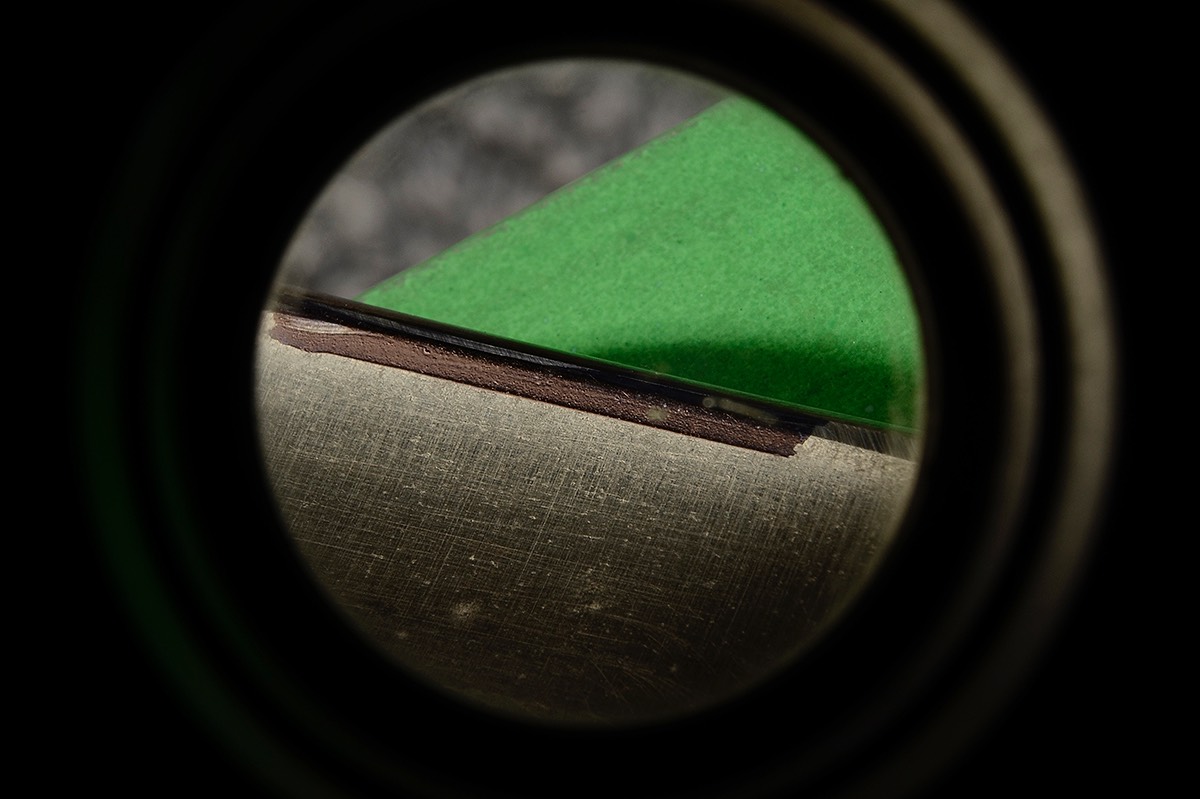
Traditionally, the sharpie test is most often used to determine whether or not the razor’s bevel is hitting the stone evenly across the length of the blade.
Sometimes though, I use the same test to gauge how well I’m fixing the honing atrocities from the previous owner/honer.
When someone uses uneven pressure on the spine, they can wear different areas on the spine to varying degrees; this may not turn into an issue right away, but over time it can become a hellish concern.
This blade is such a case. I was unable to get the the blade to sit on the stone correctly – the undercut was off badly in one place. Knowing that I probably had either a warp or a bizzaro wear pattern on the spine I ran a sharpie across the flats on the spine and when it was dry I honed a bit. The first photo shows the area of concern covered in black Sharpie.

This next photo was taken after I had been honing for a while. That is the same area but now you can see that I am starting to hit the spine all the way across the flat. Even so, the polish is just marginally continuous. I’ll keep honing until I have a respectable amount of steel showing in that newly polished area.
In this case – aggressive heel leading strokes were the ticket to success. Sometimes, the dip in the spine is too deep and honing it out would require taking off too much metal. This instance wasn’t that bad, and if I wasn’t really reading the feedback correctly it could have been overlooked fairly easily. Directly opposite that spot, the edge was ‘off’ but it was ‘close enough’ where someone might continue to hone it and think they were making a shave-ready edge.
It’s stuff like this that can cause a lot of confusion later on – without critical inspection, the edge development might have seemed to be ‘ OK’ - but the shave test would prove otherwise. An unscrupulous person that charges for honing might use a pasted strop or some other trick to overcome the resulting issue. Eventually though, the crux of the issue has to be dealt with or the edge/shave will always be subpar.

This exact same principal can be used on the bevel – it works exactly the same way. Just coat the bevel with sharpie and hone a bit. Then inspect the bevel and you’ll see where the stone/steel are making good contact. The same thing can be done by reading the scratch pattern but the sharpie makes it a little easier to see.